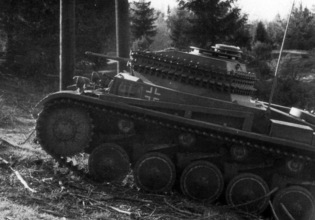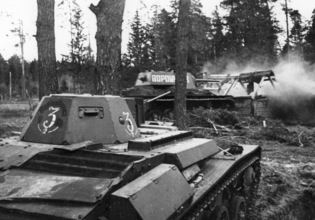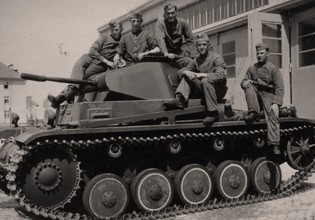The ISU-152 is the best known Soviet heavy SPG. This was the most numerous heavy SPG in history and its career lasted for many decades, overshadowing its «little sister», the ISU-122. The vehicles had the same chassis and differed only in the gun (or rather just the barrel) and ammunition racks. It was the ISU-122 and not the ISU-152 that was the main product of the Chelyabinsk Kirov Factory. This was because the vehicles with 122 mm guns were meant to be heavy tank destroyers. Tank regiments that fought in IS-2 tanks were even reformed as artillery regiments with ISU-122 tank destroyers.
Second try
The situation with the ISU-152 and ISU-122 unfolded much in the same way as it did with the towed variants. The ML-20 152 mm gun-howitzer is one of the best known Soviet heavy guns of the war. This weapon was key for Soviet artillery and a very good option for a self propelled chassis. Another weapon was built on the same carriage: the 122 mm model 1931/37 gun (A-19). This gun appeared before the ML-20 and was the first completely original Soviet cannon. Its characteristics were no worse than those of foreign guns. The rate of production of the ML-20 and A-19 was not comparable. In 1941-43 the annual amount of ML-20 guns produced was well over 1000, while no more than 500 A-19s were built. Nevertheless, the guns went together hand in hand. The same situation took place with their self propelled versions.
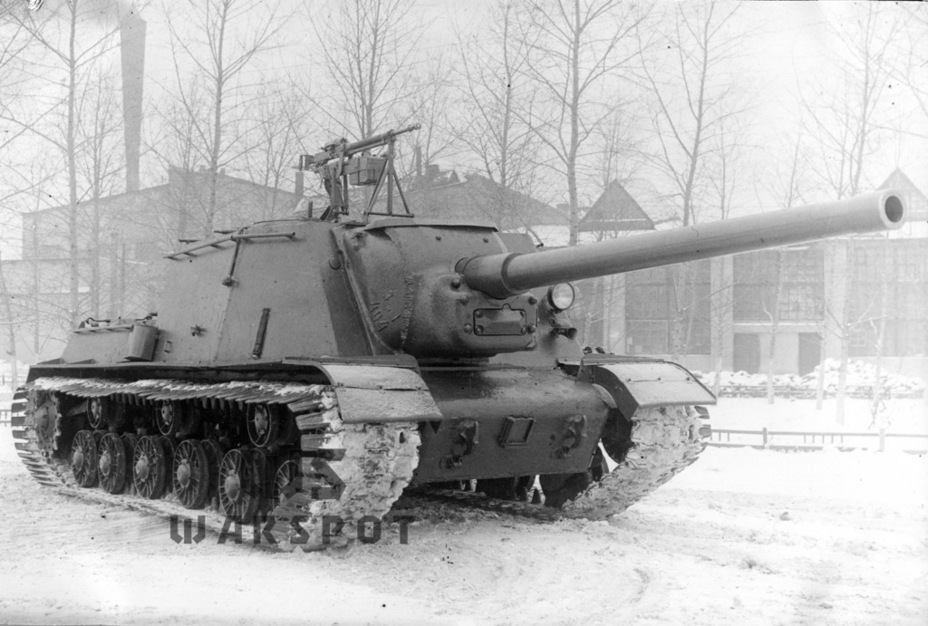
Initially, the A-19 was not considered for tanks or SPGs. This gun was thought to be too big for tanks and an SPG needed something along the lines of the 152 mm Br-2 or at least an ML-20. The main opponent of a heavy SPG before 1943 was the thick walls of fortifications. This changed after German heavy Tiger tanks were first captured in January of 1943. Trials showed that the three most effective guns against this type of tank were the 57 mm ZIS-2, 85 mm 52-K, and 122 mm A-19. GKO decree #3290 «On resuming production of 122 mm A-19 model 1931/37 corps guns and production of light corps guns» was signed on May 5th, 1943. According to this decree, production of 25 guns was expected in May and 50 every month thereafter.
Work on a heavy SPG with this gun began earlier. The design bureau of the Chelyabinsk Kirov Factory (ChKZ) was already working on installing this gun into an SU-152 as of April 28th, 1943. According to correspondence with the Main Artillery Directorate (GAU) an experimental SU-152 with this gun was expected by May 10th. In practice, work stalled quickly. ChKZ and factory #100 were overloaded with other orders and the new SPG was not a high priority assignment. This SPG was not even described in plans of the design bureaus of Chelyabinsk.
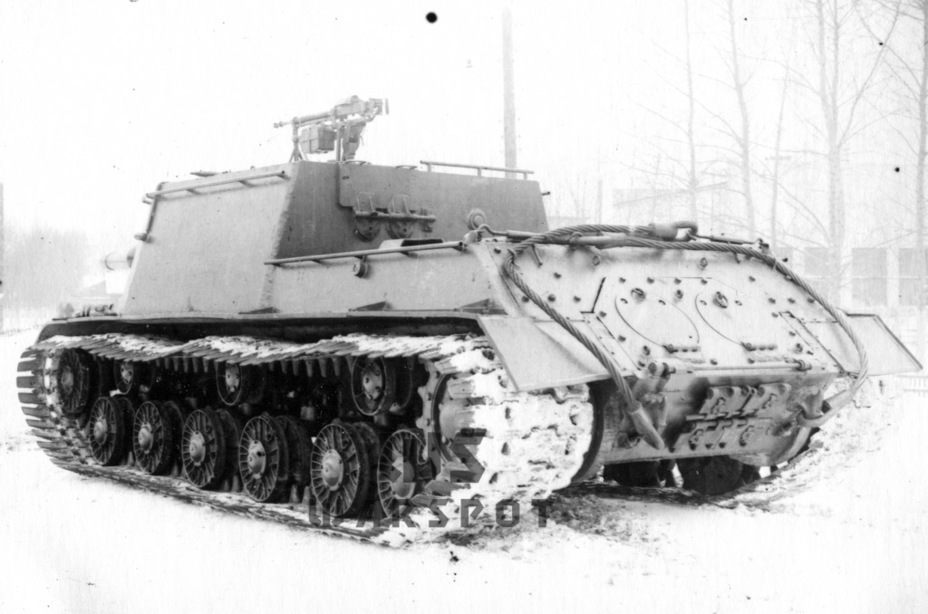
One of the reasons why installation of the A-19 into the SU-152 stalled was the prioritization of the new IS tank chassis. The first requirements for an SPG on its chassis were written on May 4th, 1943, even though the IS tank was only accepted into service on September 4th, 1943.
Since it was already clear that the tank was a good one by August, factory #100 began development of an SPG on its chassis: the Object 241 or the future ISU-152. This vehicle was a high priority task, and so no work was done on a «SU-122 with the A-19 gun on the IS tank chassis». The main task for factory #100 was to develop and produce an IS-152 (that was the initial designation of this AFV). An experimental vehicle went through factory trials on October 11th-14th. Trials at the Gorohovets Scientific Research Experimental Proving Grounds (ANIOP) took place after that, and then trials at the NIBT Proving Grounds in Kubinka. The ISU-152 was accepted into service with the Red Army on November 6th, 1943.
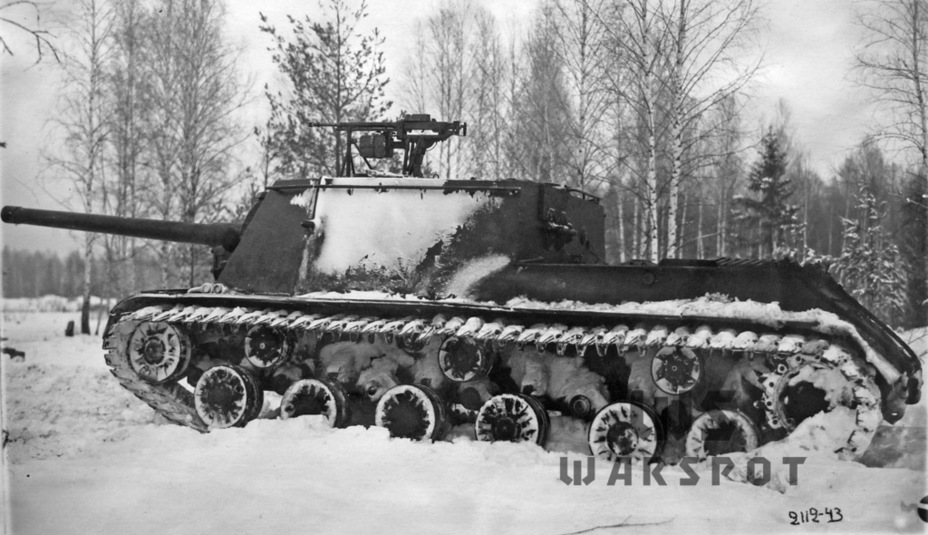
Factory #100's OKB began working on the SPG with an A-19 122 mm gun only in December of 1943. The Object 241 remained in Kubinka for a month and was returned only on December 6th, after which work to convert it began. The work was done on orders from the Main Armoured Vehicle Directorate of the Red Army (GBTU) and People's Commissariat of Tank Production (NKTP). The new vehicle had a blueprints index of 242 (also called Object 242). There was another name used: SU-IS-122.
As with the ISU-152, the Object 242 was developed under the direction of A.S. Yermolayev. The lead engineer on the project was G.N. Moskvin. There were no major changes necessary. Since the ML-20 and A-19 had the same carriage only the barrel and sight had to be replaced. However, factory trials had to wait due to a lack of 122 mm ammunition.
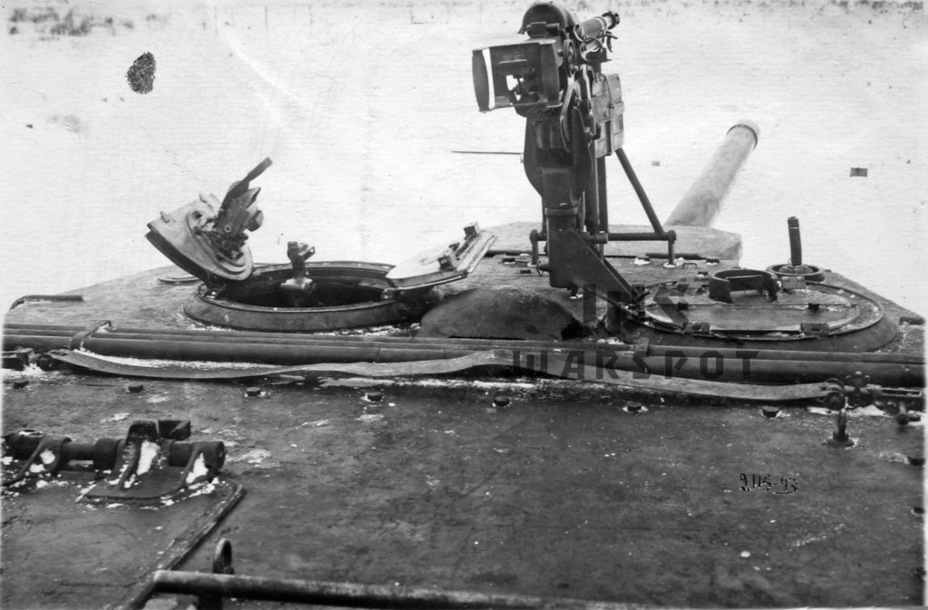
Factory #100 didn't sit idle while the vehicle awaited ammunition. Various experimental work on components and assemblies continued, and the Object 242 played the role of a test lab. The factory's design bureau tested cast tracks with extensions (made from 27 SGT steel). The vehicle also had new planetary turning mechanisms. The left one received separator-less ball bearings produced at ChKZ, the right one was built using Swedish SKF ball bearings. Finally, an experimental DShK AA mount was added on top of the commander's hatch.
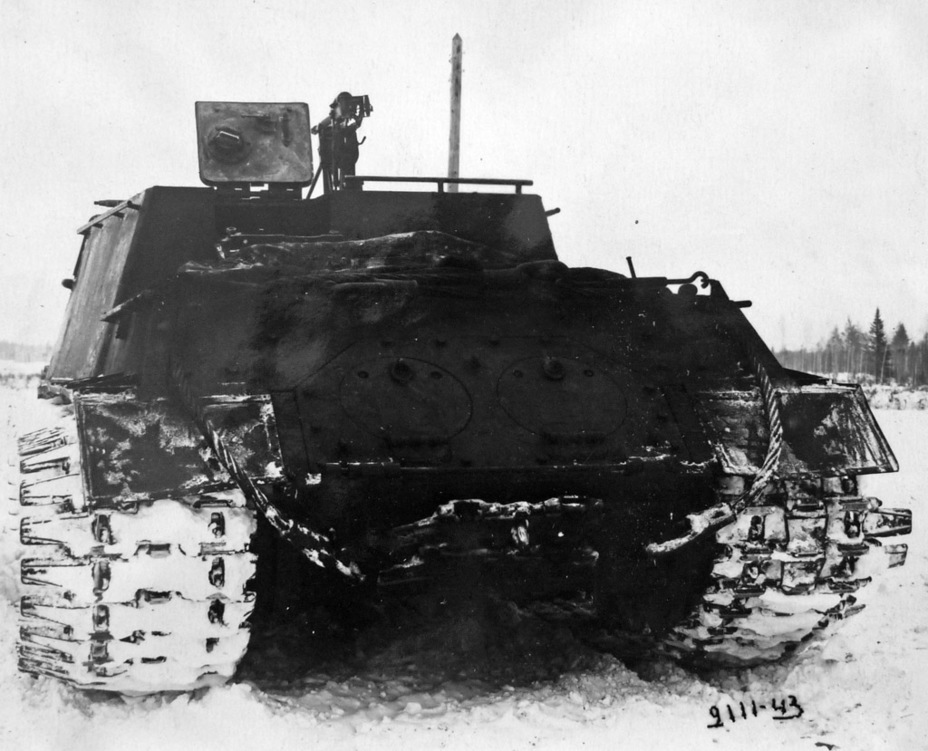
According to factory #100's plans trials of the Object 242 would take place between December 18th and 20th. In reality, the SPG was urgently sent to the Gorohovets ANIOP on December 18th. The factory did not have time to fully develop the ammunition racks and the effort on the traverse flywheel was a whopping 10-12 kg due to the rush.
Trials took place between December 24th and 30th. 438 shots were made. The crew reached an aimed rate of fire of 2-3 RPM, a well trained crew could reach a maximum rate of fire of 5-6 RPM. Despite the unfinished ammunition rack, testers deemed that loading the gun in the Object 242 was easier than on the ISU-152.
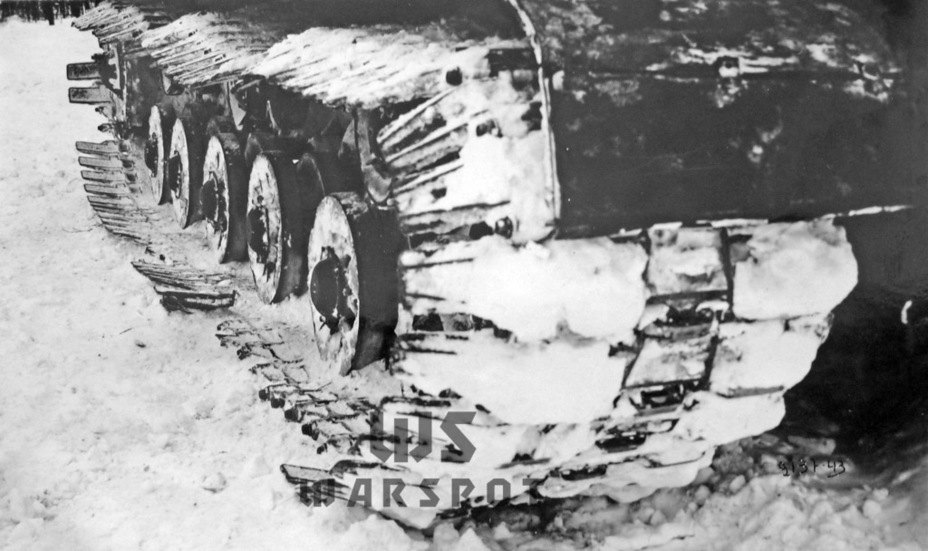
Driving trials were marred by breaking track extensions, falling off caps in the engine compartment, and other small defects. The loading tray broke as well. The overall layout of the fighting compartment was good, but the testers had complaints about the loader. He had too much work to do. There were also issues with the breech operator's role. As with the Object 240 testers did not like the screw breech and wanted it to be replaced with a sliding one. Despite all of its drawbacks, the Object 242 was considered a superior design to the ISU-152. The ammunition capacity was greater (30 rounds), the rate of fire was higher, and the crew's work was easier. It was also easier to fire at moving targets.
The penetration figures were curious. According to the testers, the ML-20 penetrated the Tiger's front armour from 500 meters. In reality, a shot from the ML-20 was guaranteed to rip off the turret from that range. Reading this document creates the impression that the testers hadn't read the reports on trials of the Panther and Ferdinand. The range at which the A-19 could penetrate the front of a Tiger was estimated to be 2000 m. Either way, the Object 242 passed trials and was recommended for production.
Higher priority than the ISU-152
Usually weeks separated trials and acceptance into service, at most a month. The Object 242 was an exception. No activity was recorded in January or February of 1944. The experimental prototype was last mentioned in factory #100's report for January. The aforementioned trials were only performed at the ANIOP, no factory trials were performed. Later this same vehicle was converted into the ISU-130. This strange situation can be explained in several ways. First of all, testers demanded a version of the A-19 with a screw breech be installed. Work on this gun was underway for the IS-2, the same gun was expected for the SPG. Furthermore, the A-19 with a muzzle velocity of 800 m/s was considered insufficient for the tank and the SPG back in the fall of 1943.
Development of a 122 mm gun with a muzzle velocity of 1000 m/s was authorized by the Chairman of the Artillery Committee Major General Hohlov on September 15th, 1943. The result was the creation of the OBM-50 (OKB-172), S-26 (TsAKB), and M-21 (factory #172 design bureau) guns. They were designed for the SU-152, but the real prototypes were installed into the ISU. A chassis for the OBM-50 was prepared in late January of 1944, the vehicle was indexed Object 243, but the gun took much longer to arrive than expected.
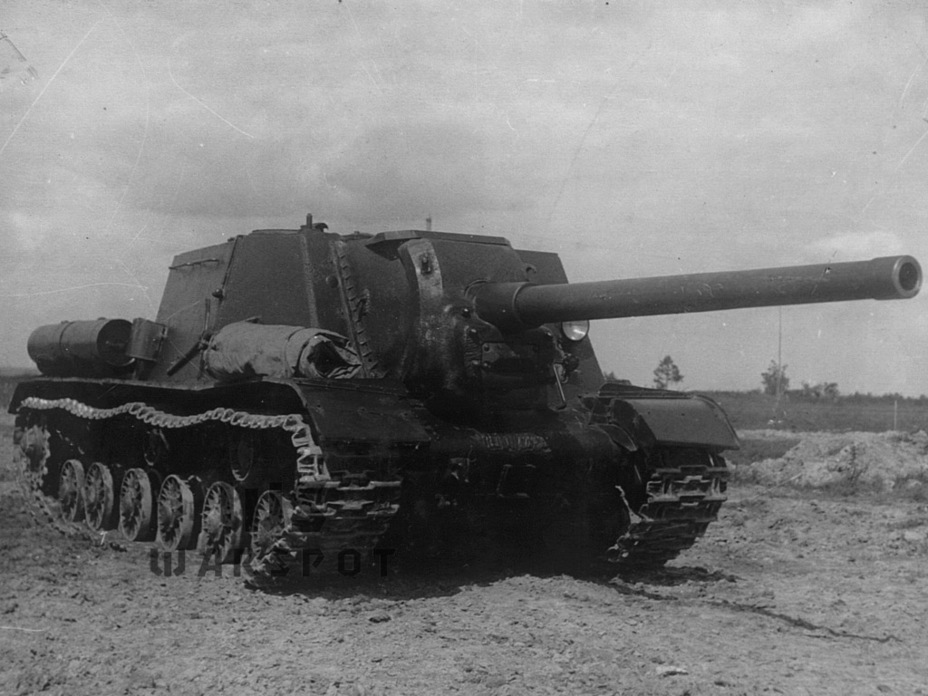
Based on correspondence, one of the people responsible for mass production of the Object 242 was Stalin himself. He added a correction to a draft GKO decree ordering an increase in heavy tank and SPG production. As a result, GKO decree #5378ss «On increasing production of IS heavy tanks and SPGs, powerful tank guns, and 122-152 mm shells» was published on March 12th, 1944, with a change. It called the SPG «ISU-122», which was the index it had when it went into production. According to the plan, the first 70 vehicles of this type were due in April of 1944, 100 in May, 120 in June, 175 in July, 200 in August. Production of the ISU-152 decreased: from 170 in March to 75 in August. The first reviews of the IS-2's performance in combat had not yet arrived, but it was already clear that the D-25 was a superior gun for fighting German «beasts».
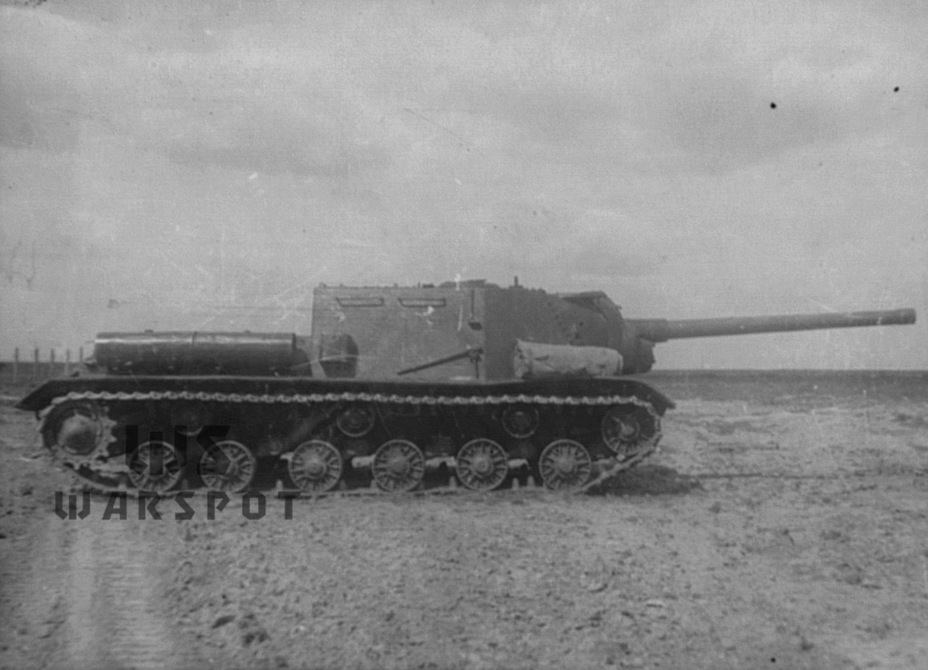
Production of the ISU-122 began at ChKZ in mid-April of 1944. Only 5 vehicles were delivered by April 20th, but the monthly quota was met by May 1st. Unlike the ISU-152, which at first also used hulls built at factory #200, all ISU-122s had hulls produced at UZTM. There were no new difficulties with the ISU-122, as the changes from the ISU-152 were minimal. A big problem came with trying to increase the rate of production of SPGs in general. A second problem, almost as significant, was the production of the A-19 guns. Some say that the ISU-122 was built due to shortages of ML-20S guns, but that assertion is only cause for amusement. In May, only the second month of ISU-122 production, there was already a shortage of A-19 guns. As a result, there were 90 ISU-122s delivered instead of 100 and 135 ISU-152s instead of 125.
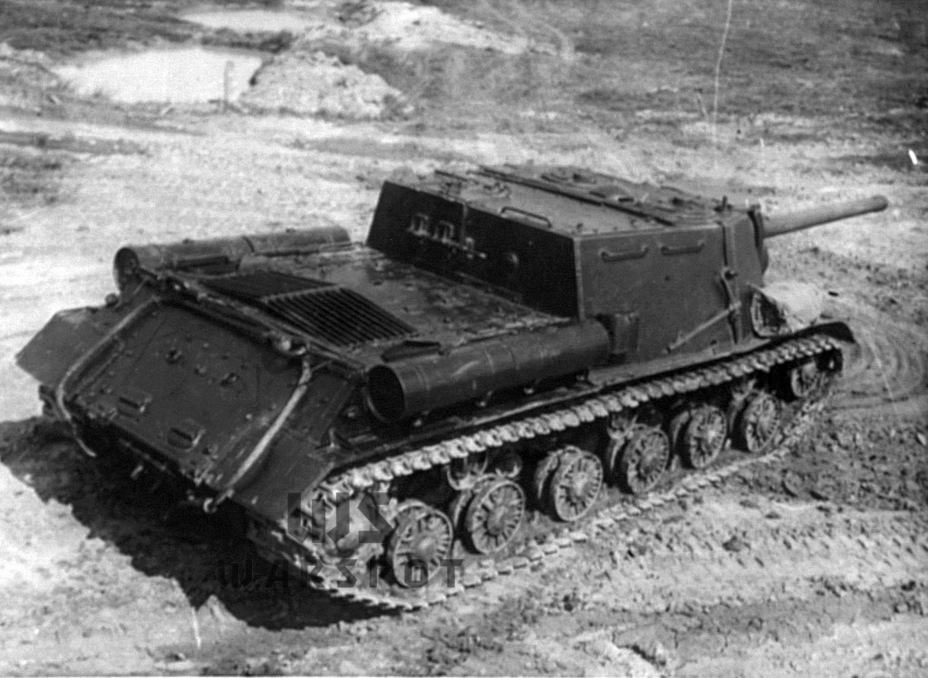
As expected, 120 vehicles were delivered in June. This time there were issues not with the guns, but with the ST-18 sight. This was the same ST-10 sight used on the ISU-152, but with markings for the A-19. As of June 25th, 1944, the factory had 80 A-19 guns but just 62 sights. The SB-3 assembly workshop had a backlog of ISU-122 SPGs and IS-2 tanks without sights. The situation with IS-2 sights was even more dire.
Changes to the SPGs were introduced at the same time. Both the ISU-122 and ISU-152 had their spare track links move from the back to the front of the hull, for instance.
The situation with guns repeated itself in July. Only 140 ISU-122 were delivered instead of 175 and 135 ISU-152s. It was clear that receiving sufficient amounts of A-19 guns would be difficult at this rate. Even though the ISU-122 had a higher priority, there were not enough guns or sights for them. And so, a third SPG on the same chassis was produced at ChKZ as of August of 1944.
Trinity
The acceptance of the ISU-122 into service did not mean that work on this vehicle was over. The GAU continued to insist on a 122 mm gun with a muzzle velocity of 1000 m/s. The issue of creating a gun with a sliding breech also remained. This gun was put into production in February of 1944, this was the D-25T used on the IS-2 tank. It would be logical to do the same for the SPG, but that was not so easy. The tank gun designed at factory #9 only inherited the ballistics and the breech from the A-19 gun. There were two solutions: alter the A-19 tube to take factory #9's breech or install the D-25T into the ISU-122 wholesale. The first variant was discarded quickly, as factory #172 would not be able to produce two different kinds of A-19. Only one option remained in March of 1944: adapting the tank gun into an SPG.
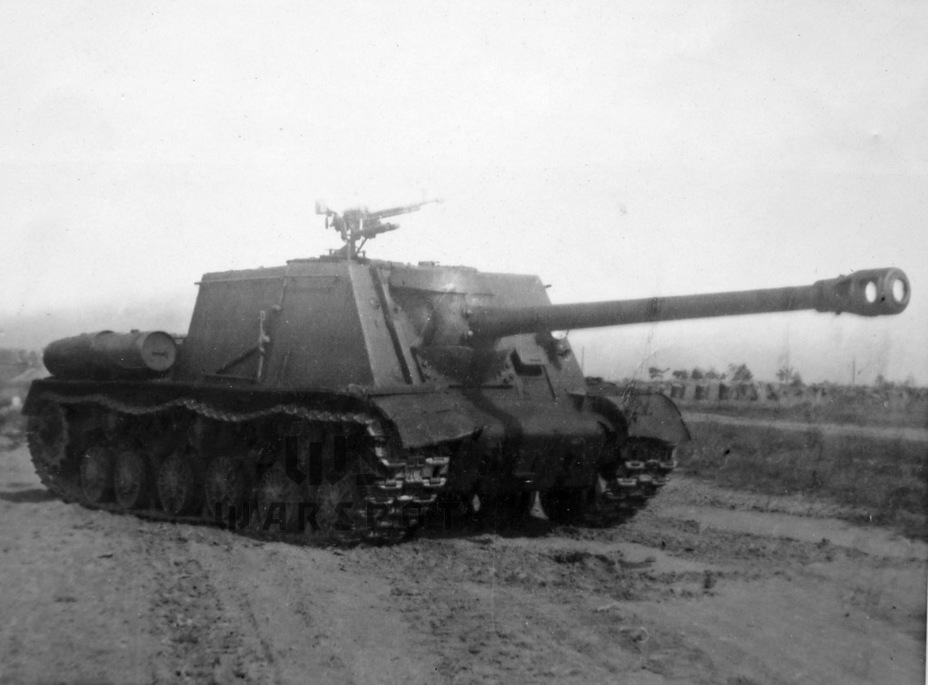
The idea to install a D-25 into the ISU-122 first came up in April of 1944. Factory #100 designated this vehicle Object 249. The chassis was assembled in early April, but the most important thing was missing: the gun. It was expected on April 8th, but in practice the D-25S arrived only in early May and was installed by late May. The Object 249 began trials without a weapon to avoid wasting time. This vehicle was not just built to test the gun, it also had an experimental planetary turning mechanism. The vehicle drove for 508 km before a gun was installed. Various methods of cleaning the radiators were also tested. A metallic brush was found to be the best choice.
Unlike the ISU-122, the Object 249 had a whole new gun mount. This made it more compact and allowed the protection to be improved. The mobile part of the gun mantlet was 80-95 mm thick, the immobile was 100 mm thick. The smaller gun mantlet also improved the driver's observation. Splash protection was added under the mount.
As for the gun, it was as close as possible to the D-25T. It was installed in a frame to allow it to traverse. The D-25S was 1700 kg lighter than the ML-20S. The new gun needed a TSh-17 sight, which caused delays on the Object 249 (or as it was also called at factory #100, ISU-122-2). The experimental vehicle was eventually equipped with a 10-T sight anyway. An improved AA machine gun mount was also installed. It was tested from May 27th to the 29th at the proving grounds of the 13h Training Tank Regiment in Chelyabinsk. It passed trials and was accepted into service with Soviet armoured and mechanized forces.
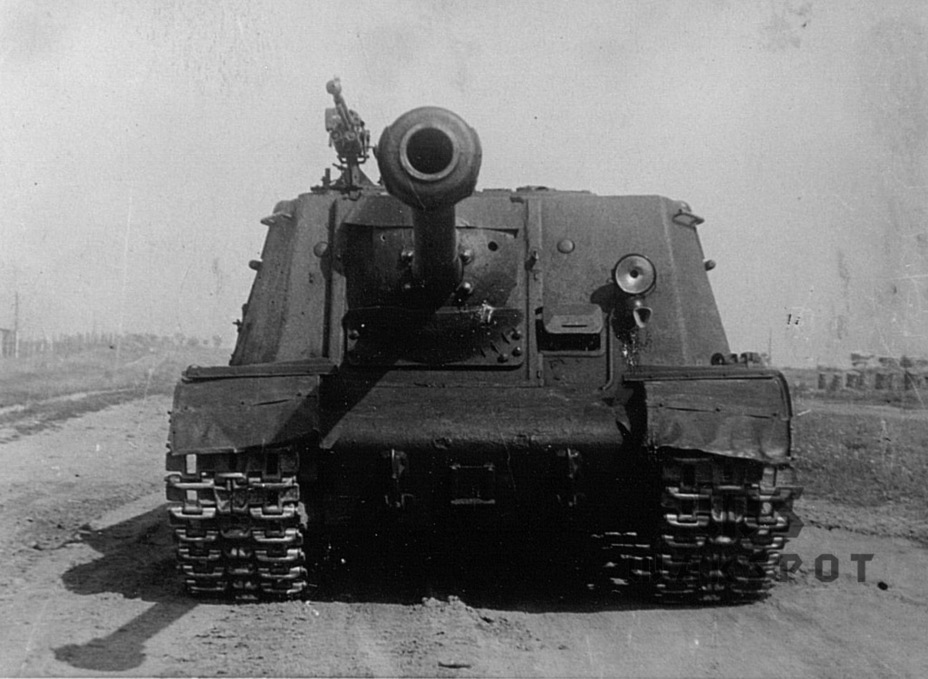
Factory trials of the ISU-122-2 began on May 23rd and ended on June 20th. The vehicle drove for another 225 km in this time. It turned out that due to the lower weight and movement of the trunnions back the mobility characteristics improved. The top speed increased from 32-35 kph to 34-37 kph. The ground pressure was also reduced. The D-25S also increased the number of free space in the fighting compartment. The firing trials did not go off without a hitch. There were difficulties with extraction and the crew turned out to be untrained. Nevertheless, the ISU-122-2 passed trials.
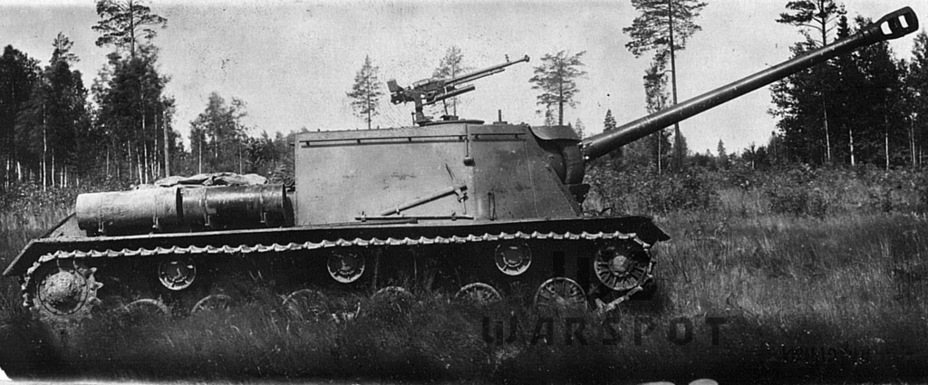
The next step of the trials took place at the Gorohovets ANIOP. The trials program was approved on May 16th, but due to a delay they took place much later: from July 2nd to the 7th. 446 shots were fired, 252 of which were supercharged. The trials were mostly successful, but the gun fired on its own after the 370th shot was loaded. There were complaints about the ammunition rack clips and the sight. The observation from the vehicle was deemed insufficient. Nevertheless, there were clear advantages over the ISU-122. The aimed rate of fire was 3-4 RPM from standstill, the maximum rate of fire was 5-6 RPM. The rate of fire on the move was 3-4 RPM. The precision was the same as shown by the A-19, the effectiveness against moving targets was also high. The commission's verdict was positive: after defects were resolved the ISU-122 with the D-25S should be accepted into service.
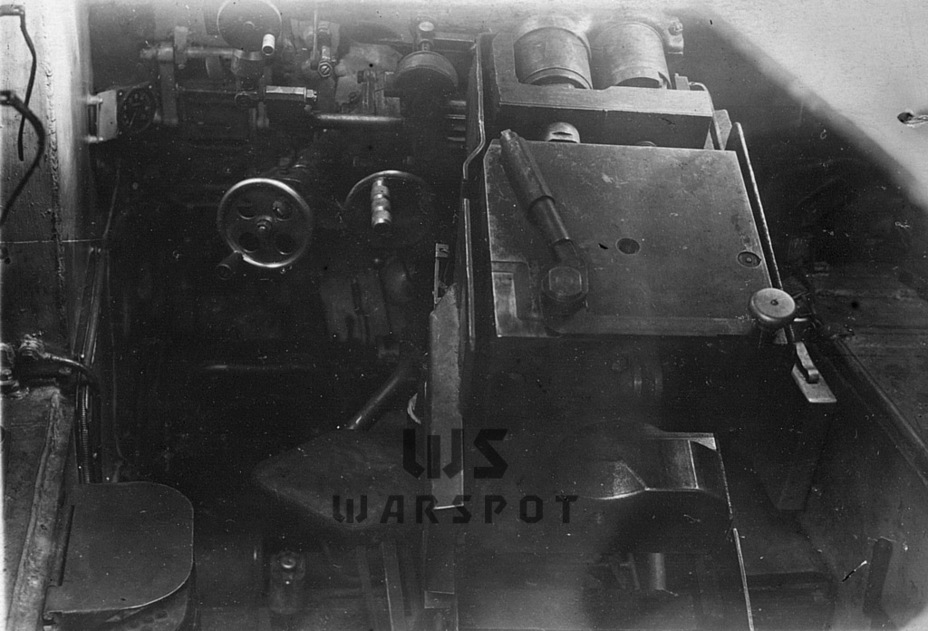
After a part of the defects were corrected the Object 249 was sent to the NIBT Proving Grounds for further trials. Despite a mishap during trials (the gun fired on its own, the loader and gunner were wounded) the trials were a success. On August 22nd Stalin signed GKO decree #6430 «On acceptance into service and production of the ISU-122S SPG with the D-25S 122 mm gun». According to the decree, a batch of 25 vehicles was expected by September 1st. This vehicle was not a replacement for the ISU-122. Factory #9 could not produce an additional 150 D-25 guns per month. The ISU-122S became a complement for the ISU-122. The vehicle also did not enter production quite as planned. The DShK AA mount was missing and a number of requested changes were not introduced. High effort on the aiming flywheels was observed.
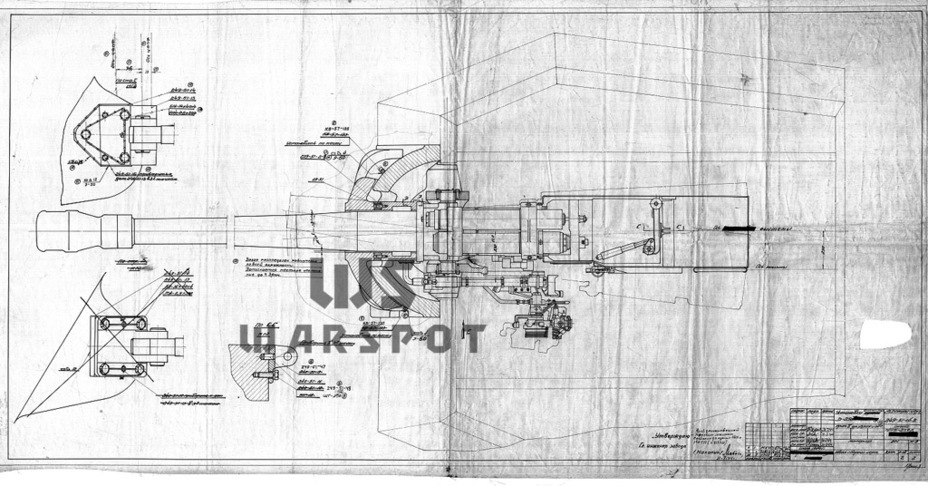
The start of ISU-122S production changed the production program. 125 ISU-122 SPGs and 25 ISU-122S were built in August of 1944. August was a difficult month for production and even the factory's firefighters had to be involved to help meet the quota. Nevertheless, the quality of production only increased. The factory delivered 100 ISU-122 and 50 ISU-122S monthly afterwards. The rhythm continued in October, November, and December. Installation of DShKT machine guns finally began in November. The ISU-122S received them first, then the ISU-122, and the ISU-152 only got them in December. All ISU SPGs began receiving DShK AA machine guns after January 1st, 1945.
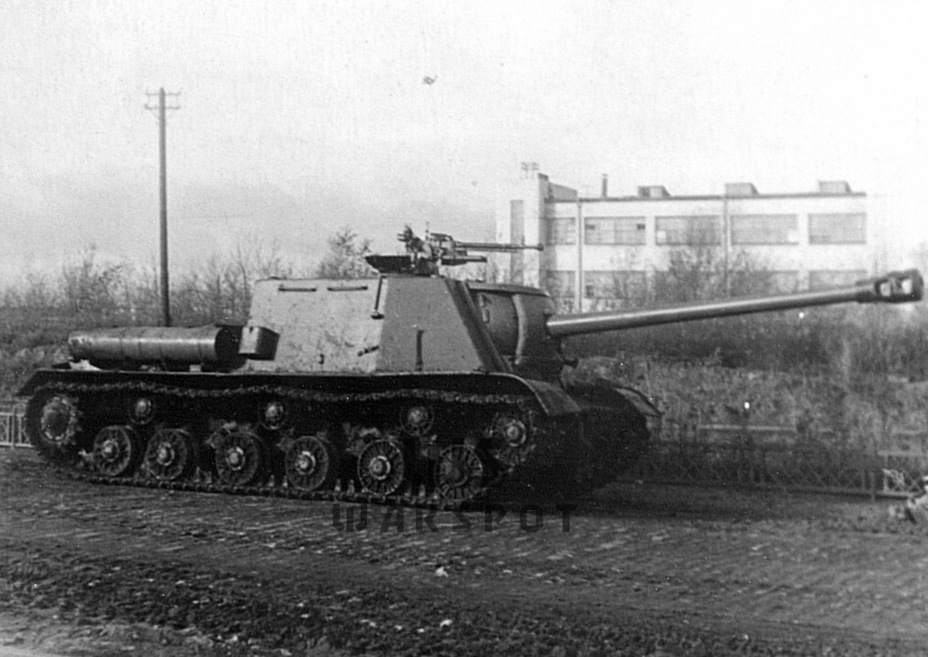
The rate of production was kept up in 1945, although 90 ISU-122 were produced in January instead of 100 due to a shortage of A-19 guns. As usual, ChKZ compensated by increasing ISU-152 production. The rate of production continued unchanged until July of 1945. Like the ISU-152, the ISU-122 vehicles changed their look over time. MDSh smoke bombs were added to the rear plate as of February 1st, and UZTM also began production of welded hulls as of February 1945. One of the last changes was the introduction of a mudguard that was initially used on the IS-85 and IS-122 but for some reason not installed on the ISU vehicles until July of 1945.
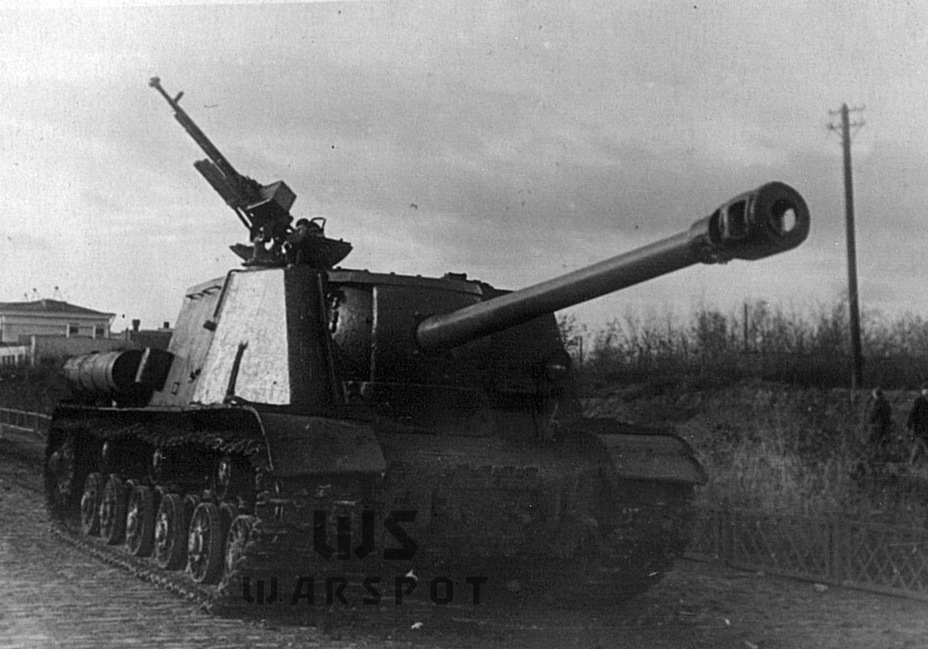
Unlike the ISU-152, the ISU-122 and ISU-122S were only built at ChKZ (Kirov factory in Leningrad never produced them). It was difficult enough to built the ISU-152 in Leningrad, plus the A-19 and D-25S were still considered insufficiently powerful to combat the latest German armoured vehicles. There was a grain of truth in this, but the BL-9 and S-26 (this also goes for the 130 mm variant) were never polished enough for production. After the end of the war there was no longer any reason to produce the ISU-122.
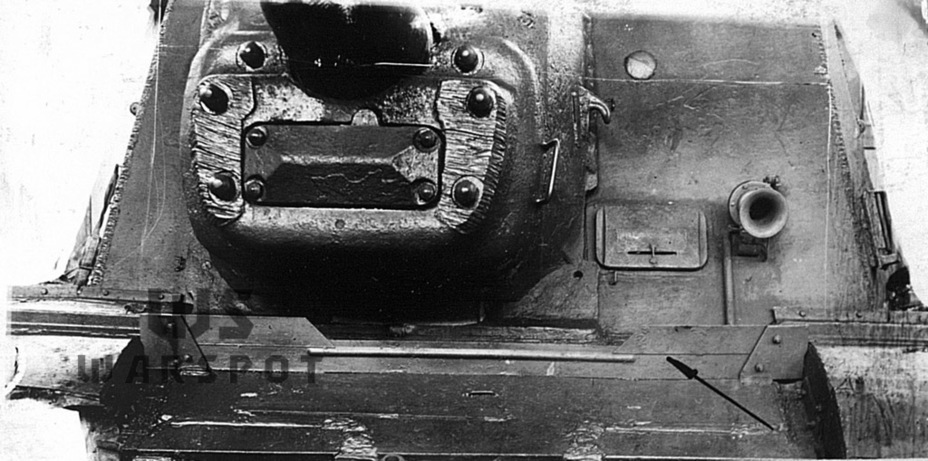
100 ISU-122 and 70 ISU-122S were delivered in August of 1945, the last sprint before production ended. The ISU-122 disappeared from production in September and only 30 ISU-122S were delivered. These were the last of their kind. In total, 1735 ISU-122 and 675 ISU-122S were built. The higher priority of vehicles with 122 mm guns allowed the ISU-122 and ISU-122S to overtake the ISU-152 in numbers, although this was already done during peacetime.
In the shadow of the «big sister»
The first ISU-122 left ChKZ in May of 1944. Like the ISU-152, they went to Heavy Guards SPG Regiments (GTSAP), TO&E #010/461 (1 command vehicle, 4 batteries of 5 each, plus 4 APCs). The importance of the GTSAPs with new vehicles can be confirmed by one fact. Some Guards Heavy Tank Regiments formerly armed with IS-1 and IS-2 tanks were converted into artillery regiments armed with the ISU-122. For instance, this was done with the 71st GTTP which played an active role in the destruction of King Tigers at the Sandomierz foothold. The reorganized regiments also received ISU-152s.
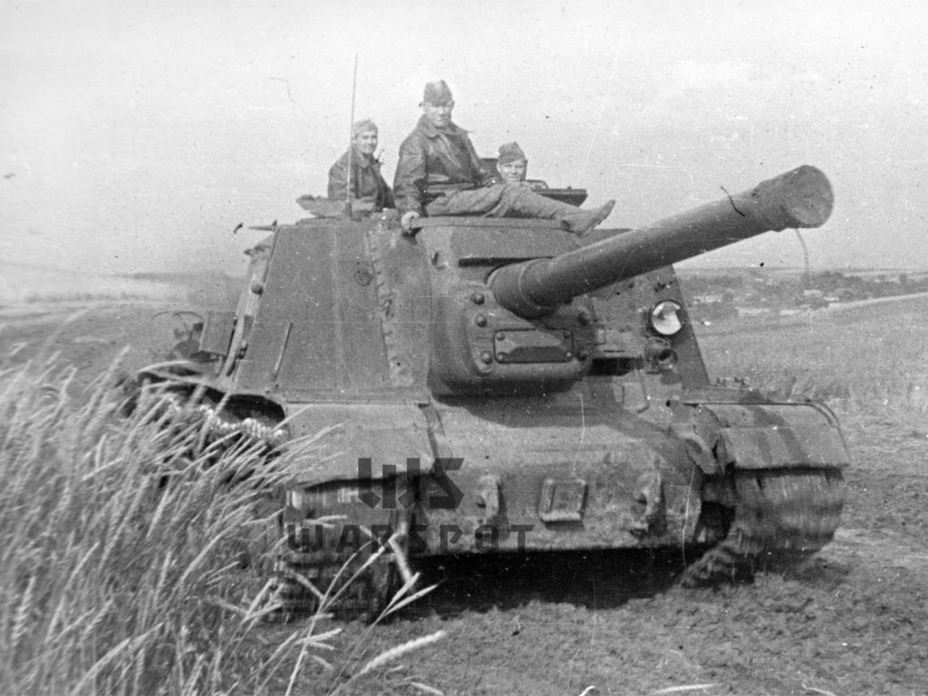
Since the formation of ISU-122 regiments began in May of 1944, they saw battle by the second half of June. One of the first units to do so was the 341st GTSAP. It was added to the 48th Army by June 22nd, 1944, and took part in Operation Bagration. The regiment attacked towards Bobruysk in support of infantry. The city was liberated on June 29th. The 11th Guards Army had two regiments with ISU-122 SPGs: the 345th and 348th. The regiments took part in the liberation of Orsha in cooperation with infantry and tank units. The 348th fought alongside the 16th Guards Rifle Division and 63rd Guards Heavy Tank Regiment, the 345th with the 84th Guards Rifle Division and the 35th Guards Heavy Tank Regiment. The first group attacked from the north, the second from the south. Orsha was freed from the enemy by 1:00 am on June 27th.
A similar situation took place with the 33th GTSAP that also took place in Operation Bagration, distinguishing itself in the liberation of Vitebsk. The ISU-122 chiefly fought not as tank destroyers, but as infantry support. The vehicle was better in this role than the ISU-152, as it carried more ammunition. As some measure the effectiveness of AFVs by the number of tanks they destroy, the ISU-122 fell by the wayside compared to the SU and ISU-152 used in other directions, for instance in the Lvov-Sandomierz offensive.
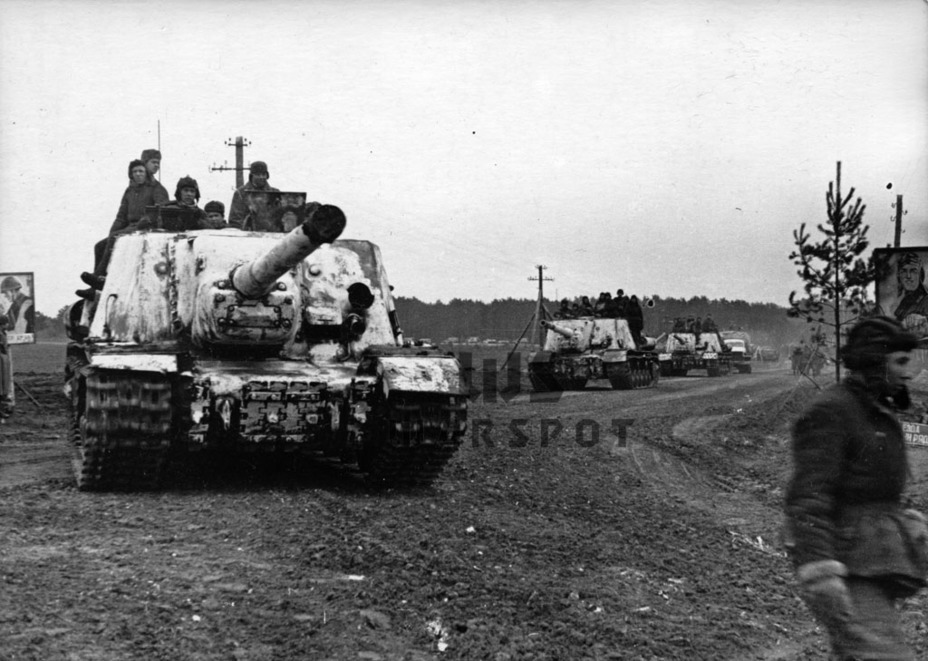
The ISU-122 was used in great numbers by the end of 1944. For instance, the 3rd Guards Tank Army had the 383rd and 385th GTSAPs formed from the 47th and 71st GTTPs respectively. The 383rd GTSAP fought in the 9th Mechanized Corps, carrying out the same role as the IS-2: reinforcement of other units. The corps reported the destruction of 88 enemy tanks and 58 SPGs at the cost of 18 tanks, one SU-85, and 2 ISU-122.
The highest scoring ISU-122 commander, Lieutenant M.I. Klimov, fought in the 383rd GTSAP. His crew destroyed 8 tanks in January-February of 1945, one of which was later identified as a King Tiger, 3 APCs, 6 guns, 4 mortars, and up to 160 enemy troops. From March 6th to 11th, 1945, during the fighting around Naumburg (modern day Nowogrodziec, Poland) Klimov's crew added 4 more tanks to their tally. The Lieutenant was heavily wounded. His heroism won him the title of Hero of the Soviet Union.
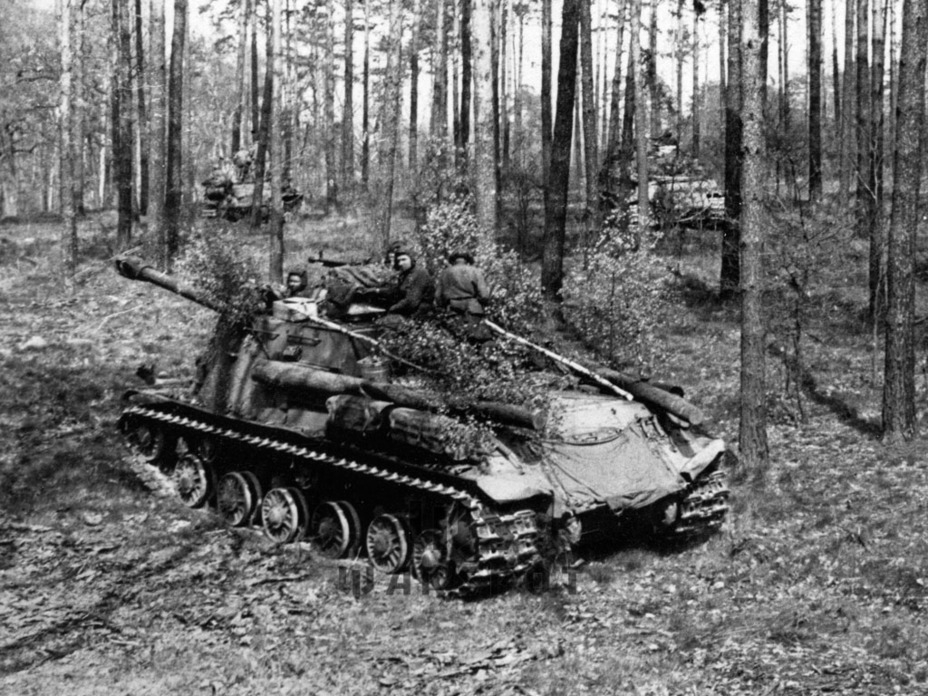
The effective performance of ISU-122 crews was far from uncommon. On January 17th, 1945, a German counterattack near Grzmiąca was repelled by Guards Senior Lieutenant E.P. Dudkin's battery from the 399th GTSAP, who destroyed 3 tanks and 2 APCs. The 364th GTSAP, formerly the 74th GTTP, also showed itself well, especially in March-April of 1945. The best performer was Guards Lieutenant V.V. Bogatyrev. His SPG destroyed 2 tanks and 3 SPGs from March 28th to April 3rd. Bogatyrev was killed in battle on April 3rd and received the title of Hero of the Soviet Union posthumously.
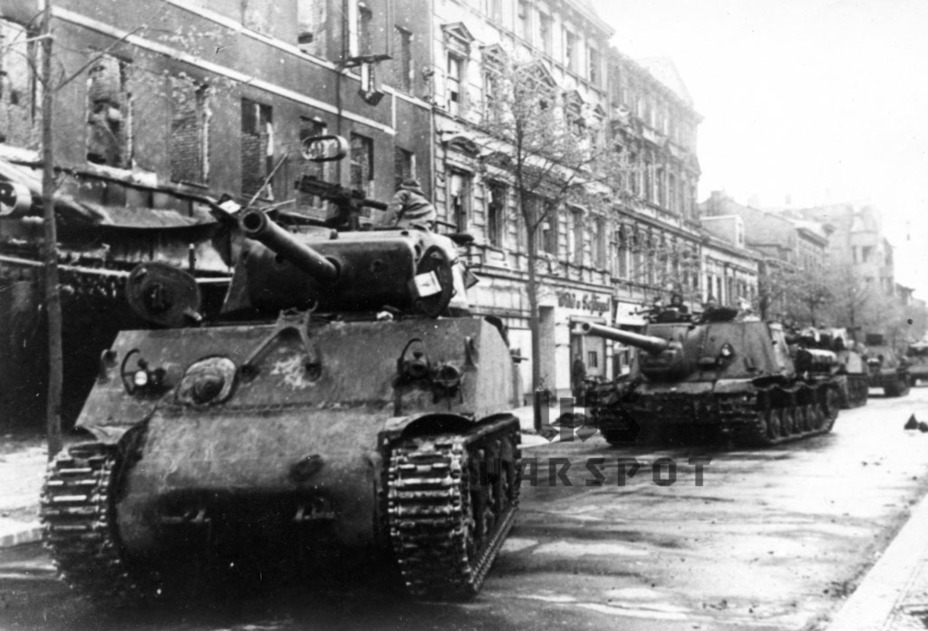
A shortage of ace crews doesn't mean anything. The goal of the ISU-122 was to cooperate with rifle and tank units. The closest analogue to the ISU-122 was the German Jagdpanther, which was better protected, carried twice as much ammunition, and had a machine gun, but had a weaker gun and, most importantly, was a rare beast. There were only 413 Jagdpanthers built in 1944-45, just 226 in 1944. As a result, the odds of meeting a Jagdpanther in battle were slim, but the ISU-122 and ISU-122S were present on every front.
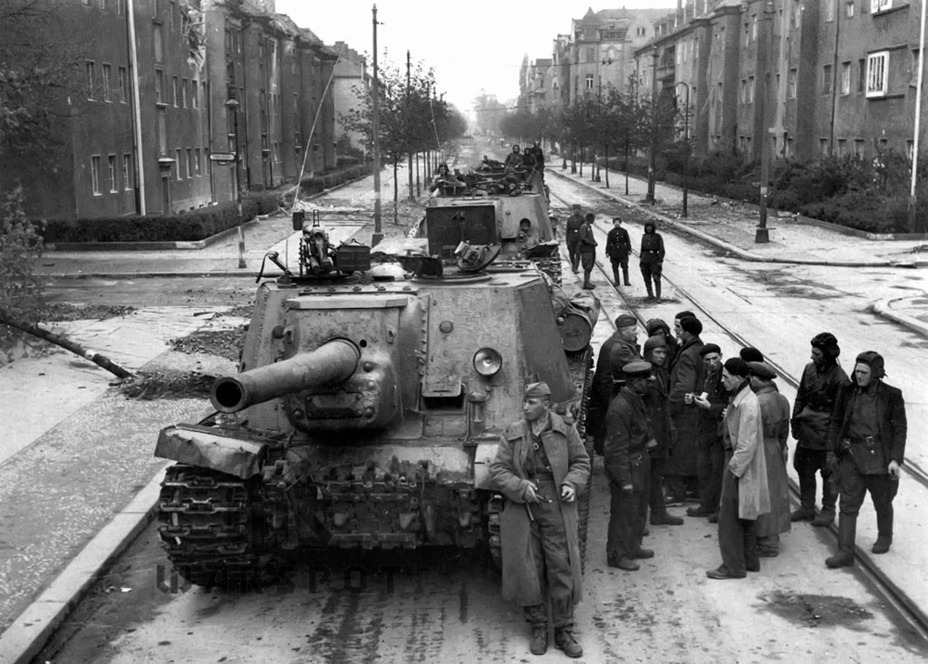
Another reason why the ISU-152 overshadowed the ISU-122 was the length of its career. These vehicles did not survive in their initial form for long. The gun was an impediment. The A-19 and D-25S looked obsolete by the mid-1950s. The ISU-122 were either written off or converted into specialist vehicles. A handful of these conversions still exist, including ones that saw battle. The ISU-122 was also accepted into service by several other nations. These vehicles could be seen in Poland (where the only surviving ISU-122S is kept) and in China.
Translated by Peter Samsonov. Read more interesting tank articles on his blog Tank Archives.
Sources:
- Russian State Archive of Economics;
- Central Archives of the Russian Ministry of Defence;
- Russian State Archive of Socio-Political History;
- Central State Archive of St. Petersburg.

